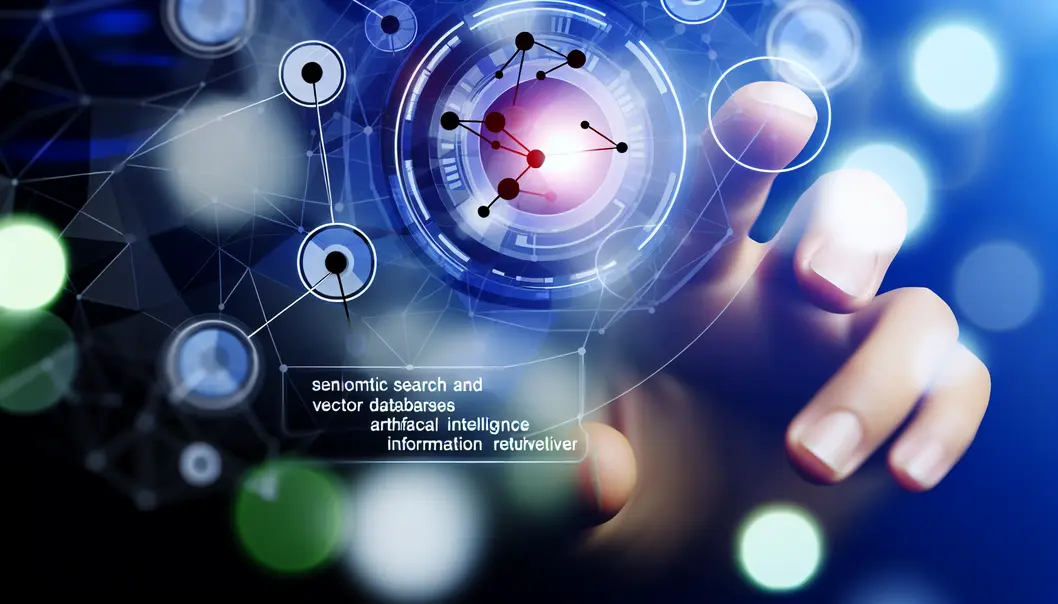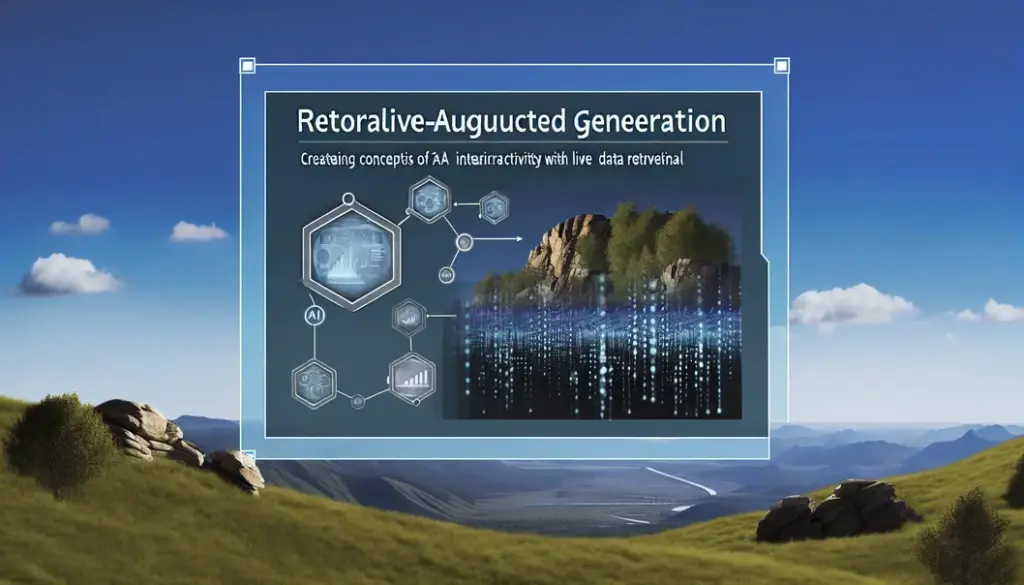Explore how Retrieval-Augmented Generation (RAG) enhances AI precision across finance, healthcare, and more, by integrating real-time data insights.
Harnessing the Power of Retrieval-Augmented Generation: A Deep Dive into Applications and Advantages

In the rapidly evolving landscape of artificial intelligence, the integration of retrieval-augmented generation (RAG) into language models has ushered in a new era of enhanced functionality and reliability. By combining the power of language generation with real-time access to up-to-date data sources, RAG bridges the gap between static AI models and the dynamic needs of users across various fields.
The applications of RAG are vast and transformative. In customer support, for instance, the ability to pull the latest information from FAQs or detailed product manuals enables AI-driven systems to offer immediate and accurate assistance. This ensures that customer inquiries are handled with the most current data, enhancing satisfaction and support efficiency.
The healthcare sector also benefits significantly from RAG. It allows medical professionals to access cutting-edge information from verified medical resources when making clinical decisions or researching new treatments. This access to the latest research and best practices is invaluable in a field where knowledge is constantly advancing.
Similarly, academic and professional researchers find RAG an indispensable tool. It facilitates the synthesis of new insights by retrieving and summarizing peer-reviewed articles and existing literature, aiding in the production of comprehensive and relevant findings.
For content creation and marketing, RAG empowers creators to produce insightful and engaging content. By incorporating real-world statistics and trends, the generated materials are not only informative but also resonate with contemporary audiences, ensuring relevance and engagement.
Beyond these sectors, RAG proves beneficial in finance, where it drives AI advisors that provide personalized investment guidance based on real-time market conditions. In insurance, it streamlines claims processing by retrieving necessary documents and past claims for swift resolution. The legal industry also reaps the advantages of RAG, where it efficiently organizes and presents relevant case law and statutes, enhancing the analytical capabilities of legal professionals.
The benefits of incorporating RAG into AI models extend beyond individual applications. A core advantage is providing responses that are current and precise, a substantial improvement over standard models that rely on outdated data. This approach significantly reduces instances of AI hallucinations, where models generate incorrect information based on their static knowledge base.
Furthermore, RAG enhances context accuracy by utilizing external information to address complex queries more effectively. This contextual intelligence makes AI systems more capable of understanding and responding to domain-specific questions with greater nuance. The model’s efficiency is also improved, as RAG allows for smaller, less resource-intensive base models to deliver high accuracy through its retrieval capabilities.
Crucially, RAG contributes to greater transparency and trust in AI-generated responses. By linking answers back to their data sources, users can verify the information and understand the rationale behind each response, bolstering confidence in AI outputs.
The customization of AI systems for specific domains is another strong suit of RAG. Without the need for extensive retraining, organizations can tailor their AI systems by incorporating domain-relevant materials like internal manuals or industry-specific documents, making the technology incredibly versatile and adaptable.
Despite these advancements, RAG faces certain challenges. The quality of external data remains crucial to its effectiveness. Moreover, there are privacy and security concerns regarding data handling and usage. Hence, future research efforts should prioritize enhancing data quality, ensuring robust privacy measures, and simplifying the integration process to further unlock the potential of RAG in transforming AI applications across various sectors.
Harnessing the Power of Retrieval-Augmented Generation: A Deep Dive into Applications and Advantages

In the rapidly evolving landscape of artificial intelligence, the integration of retrieval-augmented generation (RAG) into language models has ushered in a new era of enhanced functionality and reliability. By combining the power of language generation with real-time access to up-to-date data sources, RAG bridges the gap between static AI models and the dynamic needs of users across various fields.
The applications of RAG are vast and transformative. In customer support, for instance, the ability to pull the latest information from FAQs or detailed product manuals enables AI-driven systems to offer immediate and accurate assistance. This ensures that customer inquiries are handled with the most current data, enhancing satisfaction and support efficiency.
The healthcare sector also benefits significantly from RAG. It allows medical professionals to access cutting-edge information from verified medical resources when making clinical decisions or researching new treatments. This access to the latest research and best practices is invaluable in a field where knowledge is constantly advancing.
Similarly, academic and professional researchers find RAG an indispensable tool. It facilitates the synthesis of new insights by retrieving and summarizing peer-reviewed articles and existing literature, aiding in the production of comprehensive and relevant findings.
For content creation and marketing, RAG empowers creators to produce insightful and engaging content. By incorporating real-world statistics and trends, the generated materials are not only informative but also resonate with contemporary audiences, ensuring relevance and engagement.
Beyond these sectors, RAG proves beneficial in finance, where it drives AI advisors that provide personalized investment guidance based on real-time market conditions. In insurance, it streamlines claims processing by retrieving necessary documents and past claims for swift resolution. The legal industry also reaps the advantages of RAG, where it efficiently organizes and presents relevant case law and statutes, enhancing the analytical capabilities of legal professionals.
The benefits of incorporating RAG into AI models extend beyond individual applications. A core advantage is providing responses that are current and precise, a substantial improvement over standard models that rely on outdated data. This approach significantly reduces instances of AI hallucinations, where models generate incorrect information based on their static knowledge base.
Furthermore, RAG enhances context accuracy by utilizing external information to address complex queries more effectively. This contextual intelligence makes AI systems more capable of understanding and responding to domain-specific questions with greater nuance. The model’s efficiency is also improved, as RAG allows for smaller, less resource-intensive base models to deliver high accuracy through its retrieval capabilities.
Crucially, RAG contributes to greater transparency and trust in AI-generated responses. By linking answers back to their data sources, users can verify the information and understand the rationale behind each response, bolstering confidence in AI outputs.
The customization of AI systems for specific domains is another strong suit of RAG. Without the need for extensive retraining, organizations can tailor their AI systems by incorporating domain-relevant materials like internal manuals or industry-specific documents, making the technology incredibly versatile and adaptable.
Despite these advancements, RAG faces certain challenges. The quality of external data remains crucial to its effectiveness. Moreover, there are privacy and security concerns regarding data handling and usage. Hence, future research efforts should prioritize enhancing data quality, ensuring robust privacy measures, and simplifying the integration process to further unlock the potential of RAG in transforming AI applications across various sectors.
Final thoughts
RAG revolutionizes AI by integrating real-time data for precise, context-aware insights, empowering professionals across diverse fields.
Ready to elevate your business with cutting-edge automation? Contact Minh Duc TV today and let our expert team guide you to streamlined success with n8n and AI-driven solutions!



